client: Ville de Fribourg
team: Güller Güller architecture urbanism
Competition
Just as urban squares such as Place de l’Hôtel de Ville, Place des Ormeaux and Place de Notre-Dame and the train station were motors for renewing city of Fribourg over time and beyond its city walls, the Cardinal site will become the 21st century driver behind the city’s renaissance. As a new and catalysing public space in the city, Cardinal will re-launch innovation and activate urban economies, as well as link, animate and promote Fribourg’s quarters.
It is crucial that the future masterplan for Cardinal is a means to open the site and reintegrate it with the city. Cardinal will be indispensable for the accommodation of functions at a cantonal scale within an attractive and animated environment.
The heart of the site is the ‘market of innovation,’ a revitalized warehouse transformed into a public space where actors from the techno-park can interact with each other and also encounter the public in general. The historic warehouse will be renovated in a way to host the diverse uses of a techno-park in addition to serving the workers there and the public. Connected to a new square around the former silo structure and this renovated warehouse, the centrally-located market will serve as an attraction for the area.
The site itself is regenerated along two axes. The north-south orientation, formerly the production line for the brewery, will be transformed into a public axis for knowledge production, ‘the axis of innovation.’ A new elevated walkway stretches from east to west connecting Beaumont and the plateau of Pérolles.
The high-quality atmosphere of the site will bring value to the heritage of this historic brewery while making possible the layering of new urban programs and opening of the site with its surrounding quarters. Innovation comes from investing in a balance of old and new, between state-of-the-art elements and the opportunities within what already exists. By bringing these two together continuously and systematically and through the lens of the built environment, a sustainability born from present conditions and potentials can be achieved.
 position in the city
position in the city

 program
program




 impressions
impressions

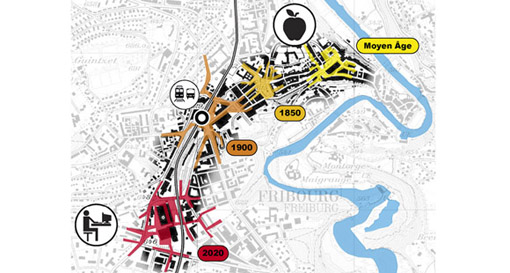

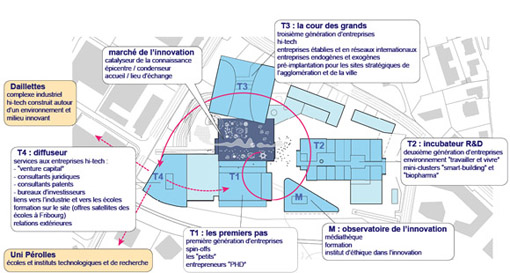
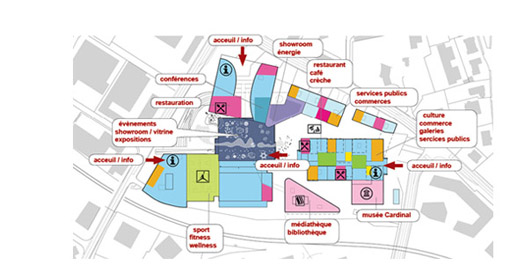


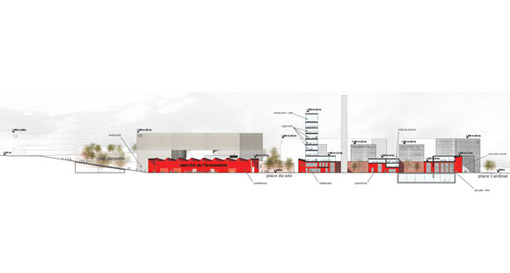
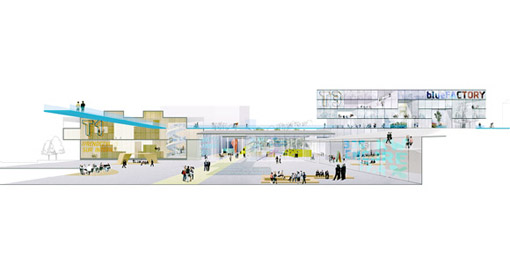
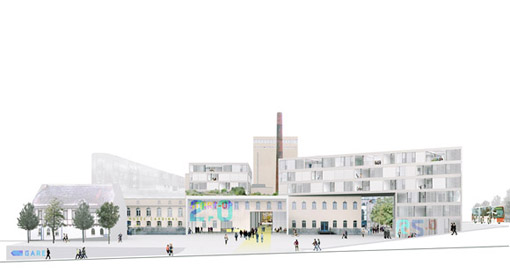
Cardinal Brewery redevelopment masterplan
Fribourg, Switzerland, 2012
Fribourg, Switzerland, 2012
